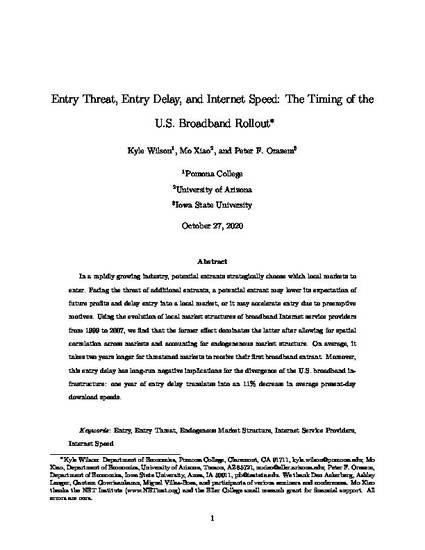
In a rapidly growing industry, potential entrants strategically choose which local markets to enter. Facing the threat of additional entrants, a potential entrant may lower its expectation of future profits and delay entry into a local market, or it may accelerate entry due to preemptive motives. Using the evolution of local market structures of broadband Internet service providers from 1999 to 2007, we find that the former effect dominates the latter after allowing for spatial correlation across markets and accounting for endogenous market structure. On average, it takes 2 years longer for threatened markets to receive their first broadband entrant. Moreover, this entry delay has long‐run negative implications for the divergence of the U.S. broadband infrastructure: 1 year of entry delay translates into an 11% decrease on average present‐day download speeds.
Available at: http://works.bepress.com/peter-orazem/134/

This is a working paper of an article posted as Wilson, Kyle, Mo Xiao, and Peter F. Orazem. "Entry Threat, Entry Delay, and Internet Speed: The Timing of the US Broadband Rollout." Journal of Economics & Management Strategy (2020). doi: 10.1111/jems.12407. Posted with permission.